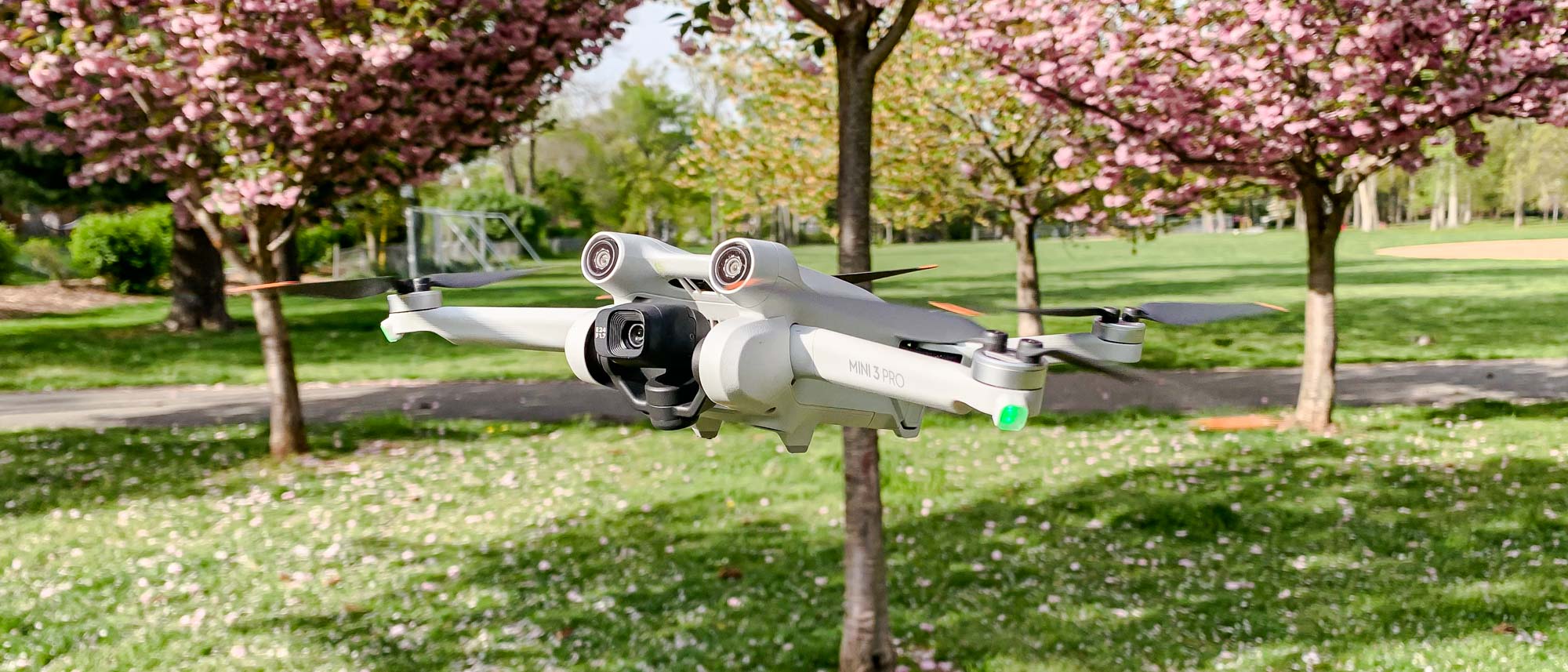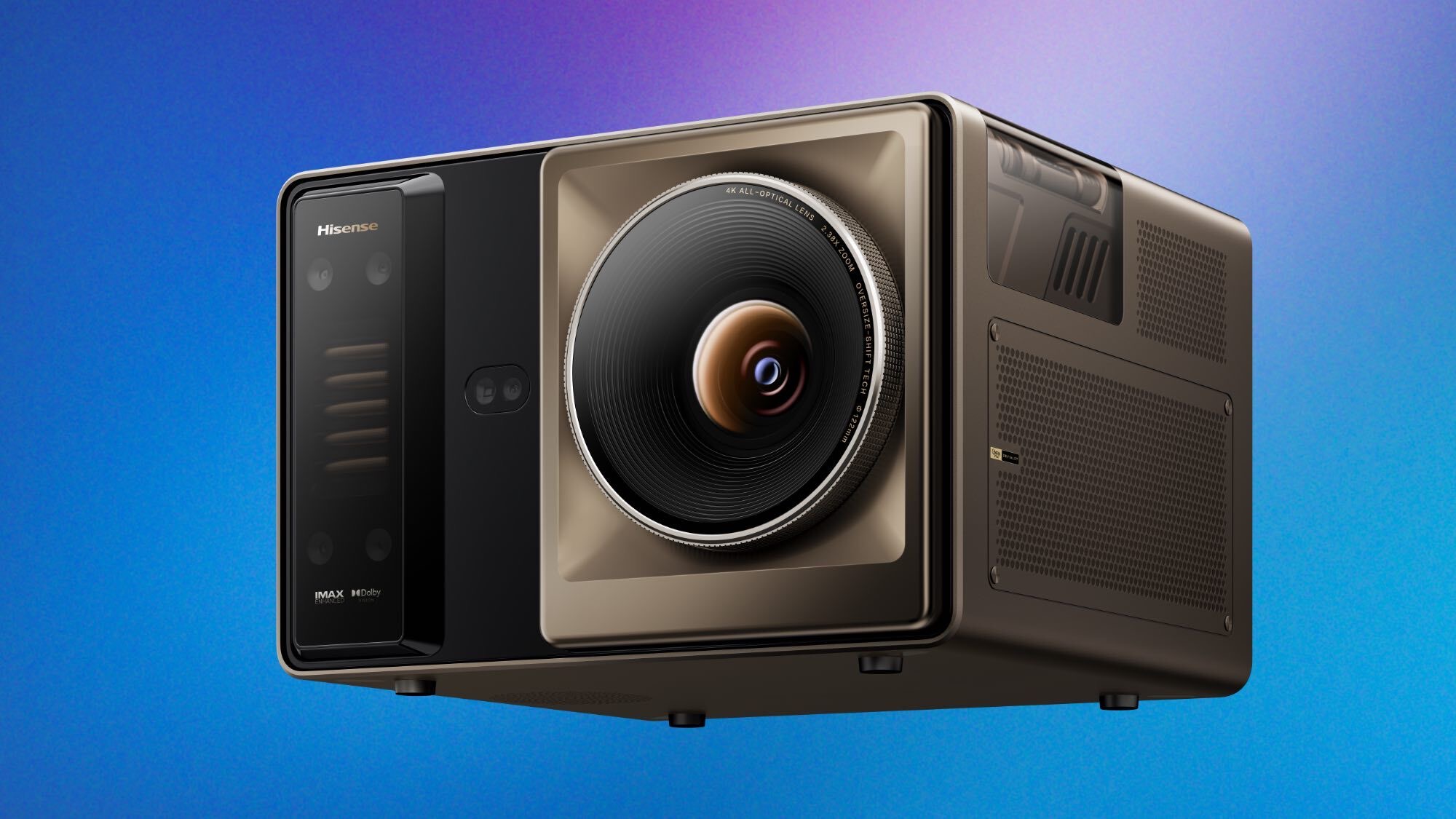Tom's Guide Verdict
Get the DJI Mini 3 Pro if you’re looking for a tiny and very capable drone that can shoot vertical video.
Pros
- +
Very small and light
- +
Excellent flight time with extended battery
- +
Vertical video mode
Cons
- -
Object tracking doesn’t work in vertical video mode
Why you can trust Tom's Guide
Size (folded): 5.7 x 3.5 x 2.4 inches
Size (unfolded): 9.6 x 6.7 x 2.4 inches
Weight: 249 grams
Camera sensor: 1/1.3-inch CMOS, f/1.7 aperture
Field of view: 82.1 degrees
Max image size: 48MP
Max video resolution: 4K/60 fps
ISO range: 100-6400
Flight time: 34 minutes (47 w/extended battery)
The DJI Mini 3 Pro is the world’s first TikTok drone. In addition to being as small and light as before, the new version of DJI’s smallest drone can do something no other drone can: rotate its camera 90 degrees to take vertical video. But if that were its only trick, then we could dismiss it as a gimmick.
What elevates the Mini 3 Pro to our list of the best drones is that, despite its small size, it has excellent object-tracking, obstacle avoidance, and, with the extended battery, an absurdly long flight time. Is this the best drone for influencers? You’ll have to read the rest of our DJI Mini 3 Pro review to find out.
DJI Mini 3 Pro review: Price and availability
The DJI Mini 3 Pro is available starting today (May 10, 2022) and will be offered in three configurations:
The DJI Mini 3 Pro and Intelligent Flight Battery, with no remote controller, will cost $669/AU$989; DJI intends this model for current DJI owners who might want to upgrade without having to purchase a new controller.
The DJI Mini 3 Pro, Intelligent Flight Battery, and the RC-N1 controller (which requires you to use your phone as a display) costs $759/AU$1,119; the DJI Mini 3 Pro, Intelligent Flight Battery, and the DJI RC (which has a built-in display) will run $909/AU$1,299.
In addition, there will be two Fly More kits offered. Both come with two sets of propellers, a carrying bag, and a charging hub. One of the Fly More Kits will include the regular Intelligent Flight Battery for $189/AU$259, while the other will have the Intelligent Flight Battery Plus for $249/AU$359.
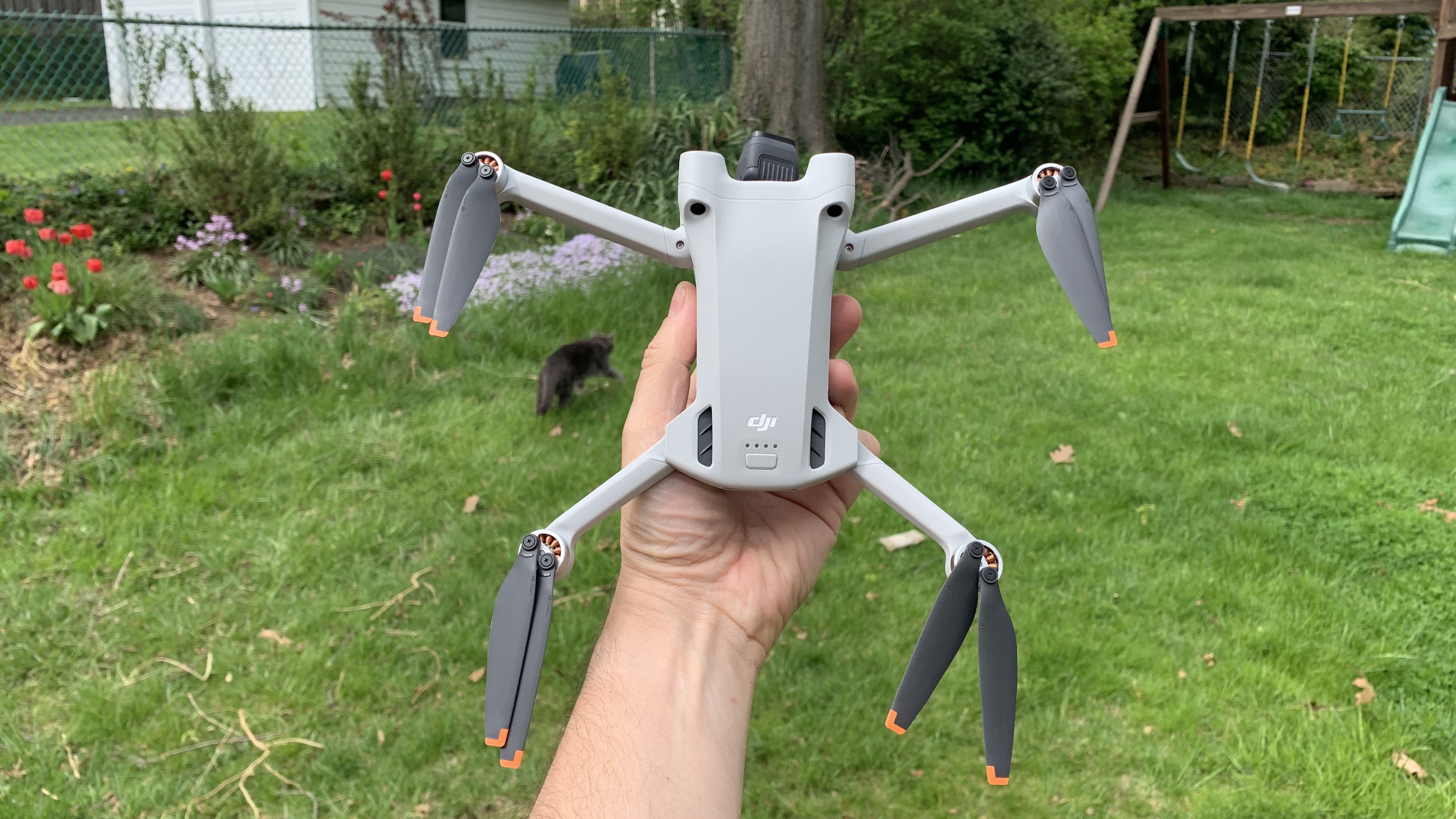
DJI Mini 3 Pro review: Design
The Mini 3 Pro looks very similar to its predecessor, the DJI Mini 2. It’s nearly identical in size and weight; the most obvious difference is that the Mini 3 Pro has two more bulbous protrusions on the front for its forward-facing sensors. The camera gimbal is also slightly redesigned.
Get instant access to breaking news, the hottest reviews, great deals and helpful tips.
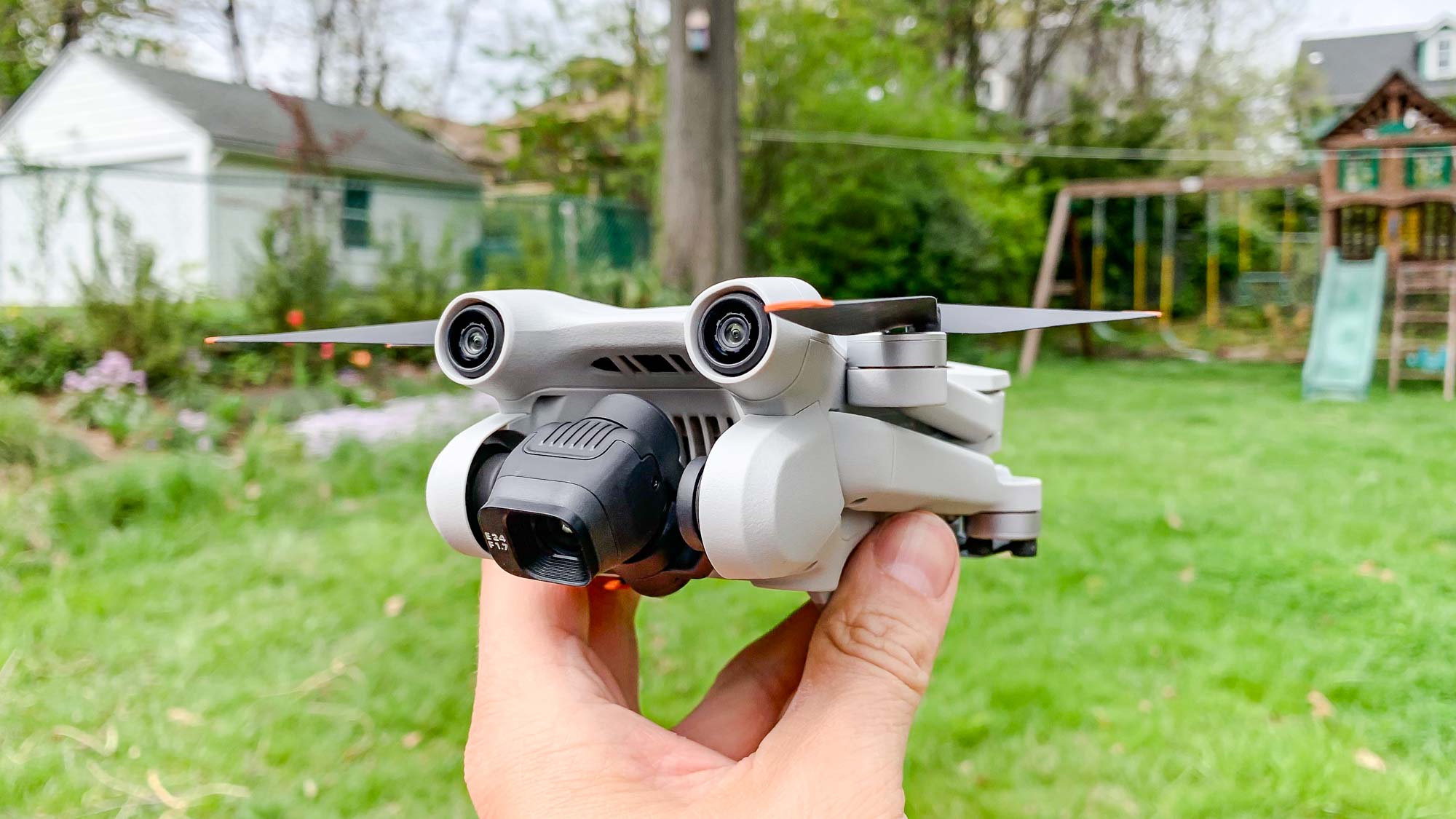
Otherwise, all the hallmarks of DJI are here, such as its folding arms, a design note that virtually every other drone maker has adopted. On the Mini 3 Pro, they’re angled in a way so that when the drone is flying, the body angles upwards at a slight angle, which makes it look a little funny when hovering.
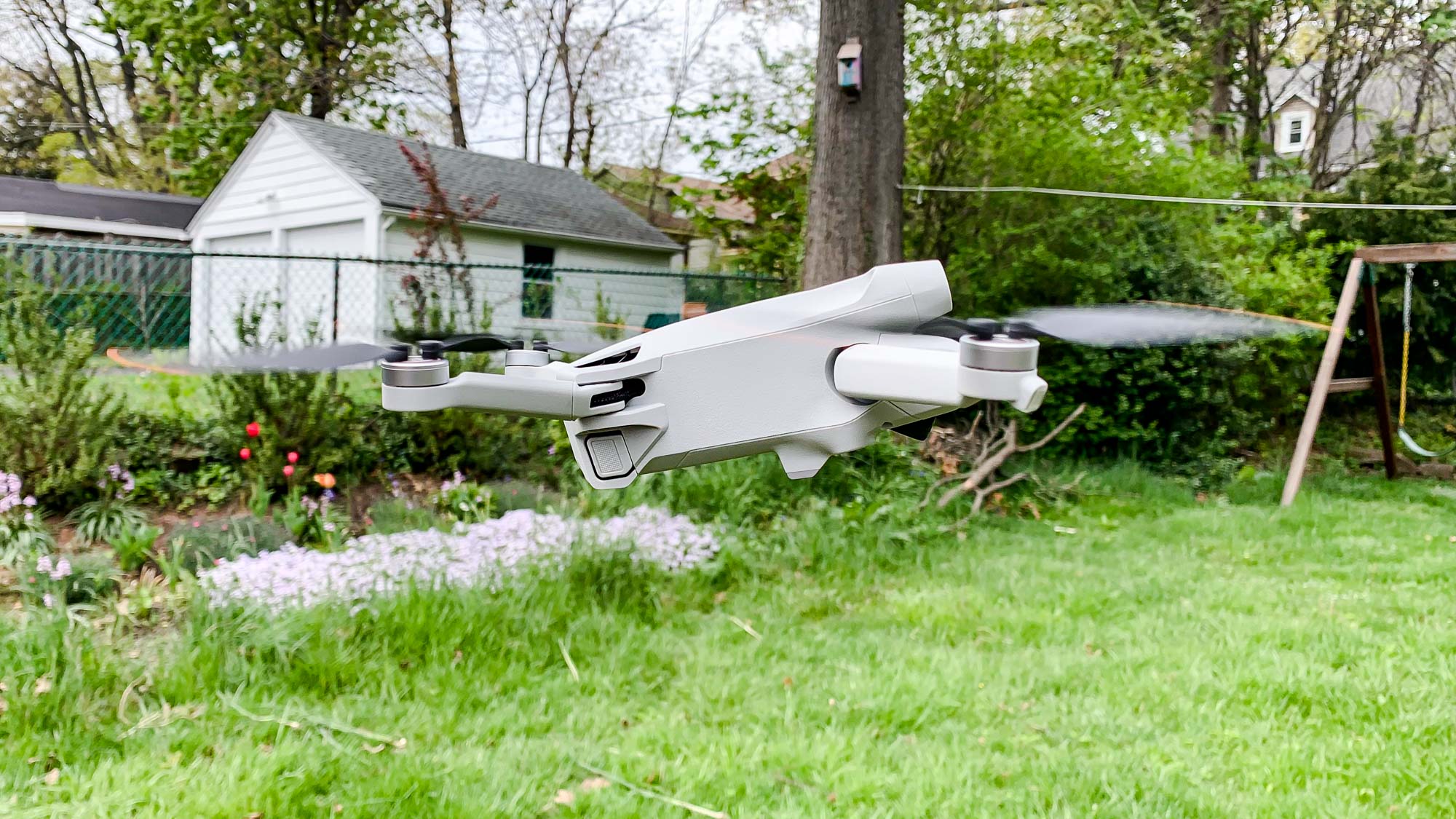
Like the Mini 2, the Mini 3 Pro also weighs a scant 249 grams — just shy of the 250-gram limit that would require you to register the drone with the FAA. That’s the same weight as the balls of dough I use to make pizza, and it makes the Mini 3 Pro feel so light as to seem toy-like.
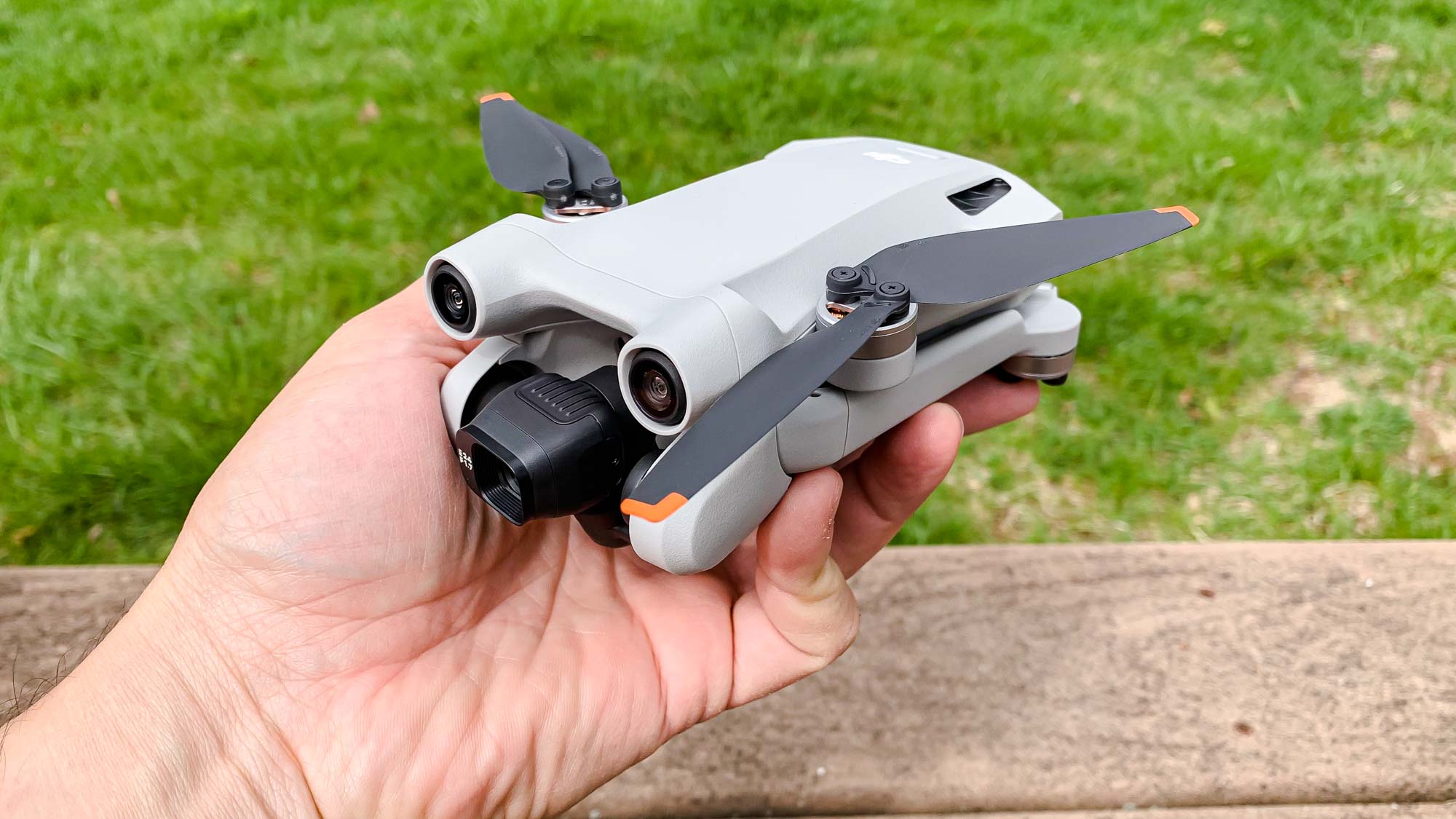
The Mini 3 Pro’s battery slides into the rear of the drone; just above is a USB-C port and a microSD card slot.
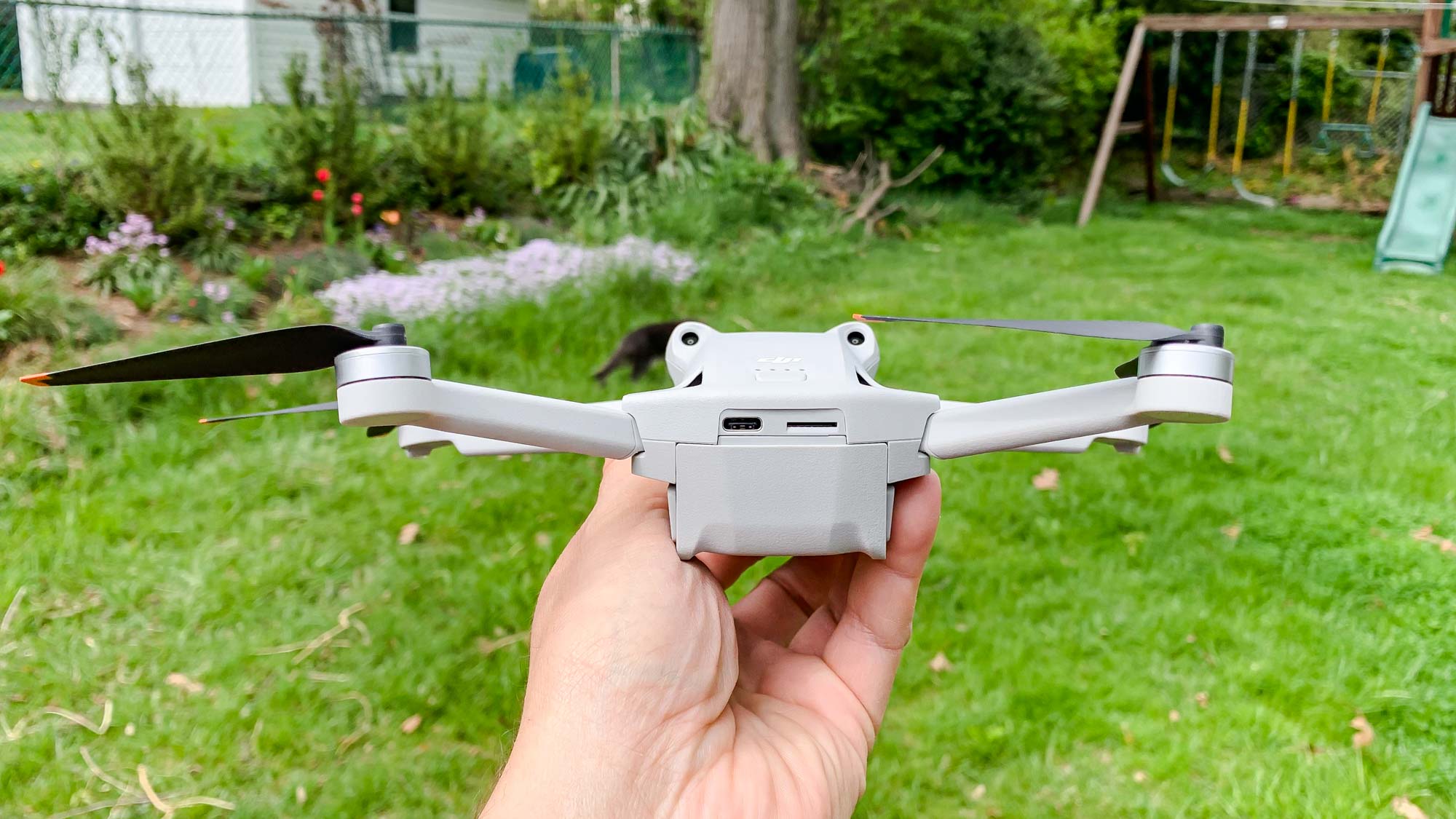
It should be noted, though, that if you purchase the Mini 3 Pro extended battery, its weight exceeds 250 grams, putting it over the limit.
DJI Mini 3 Pro review: Controllers
With the Mini 3 Pro, DJI gives you the option of two different controllers. The less expensive option is the RC-N1 controller, which looks like something that might work with a PS5 or Xbox Series X; the body has two control sticks and a set of shoulder buttons. A spring-loaded clasp extends from the top and holds your smartphone, whose screen shows a live feed from the Mini 3 Pro’s camera, and lets you adjust various settings. The other, more expensive, option is the DJI RC, which is basically a controller with a 5.5-inch Android tablet built in.
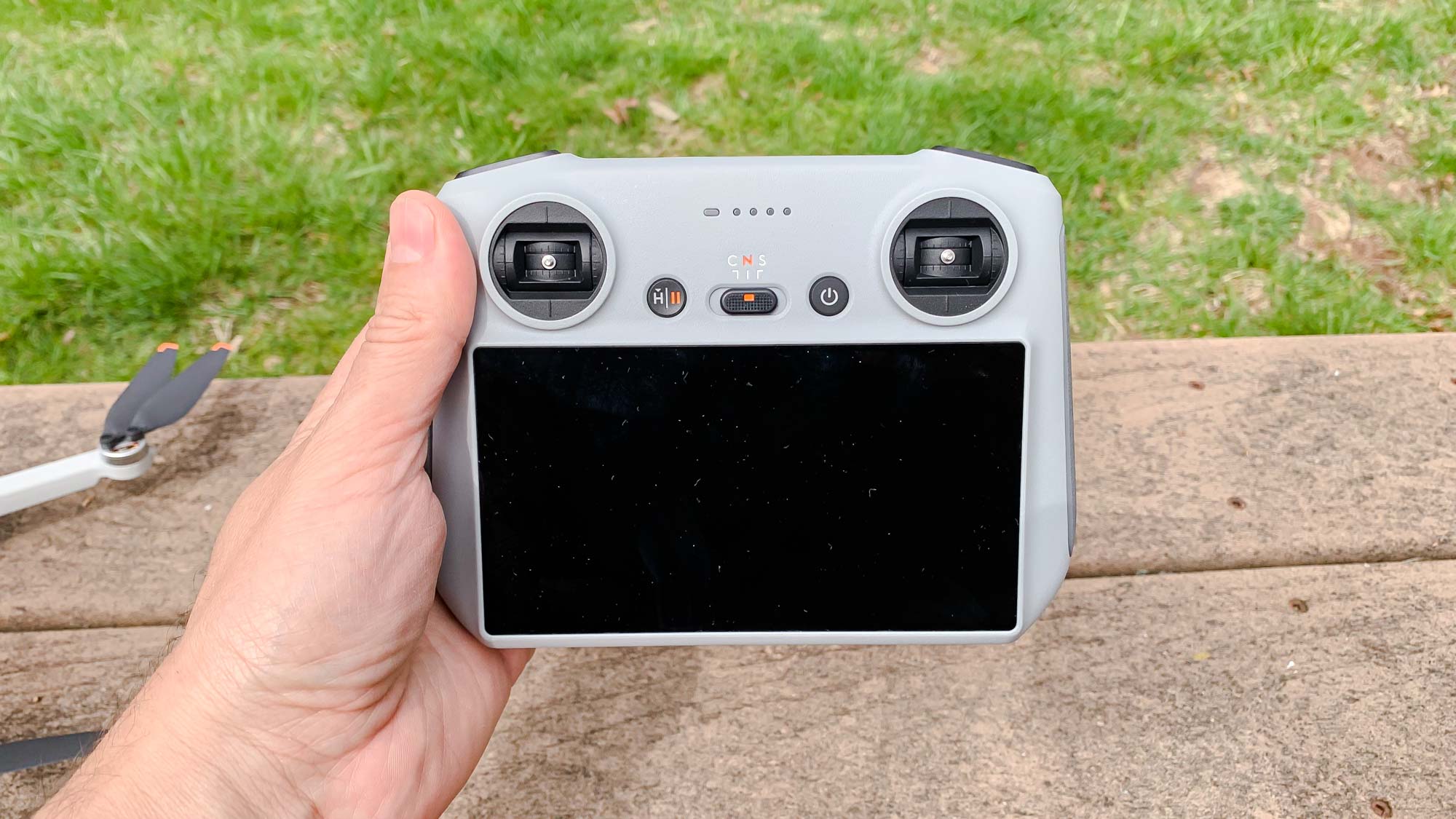
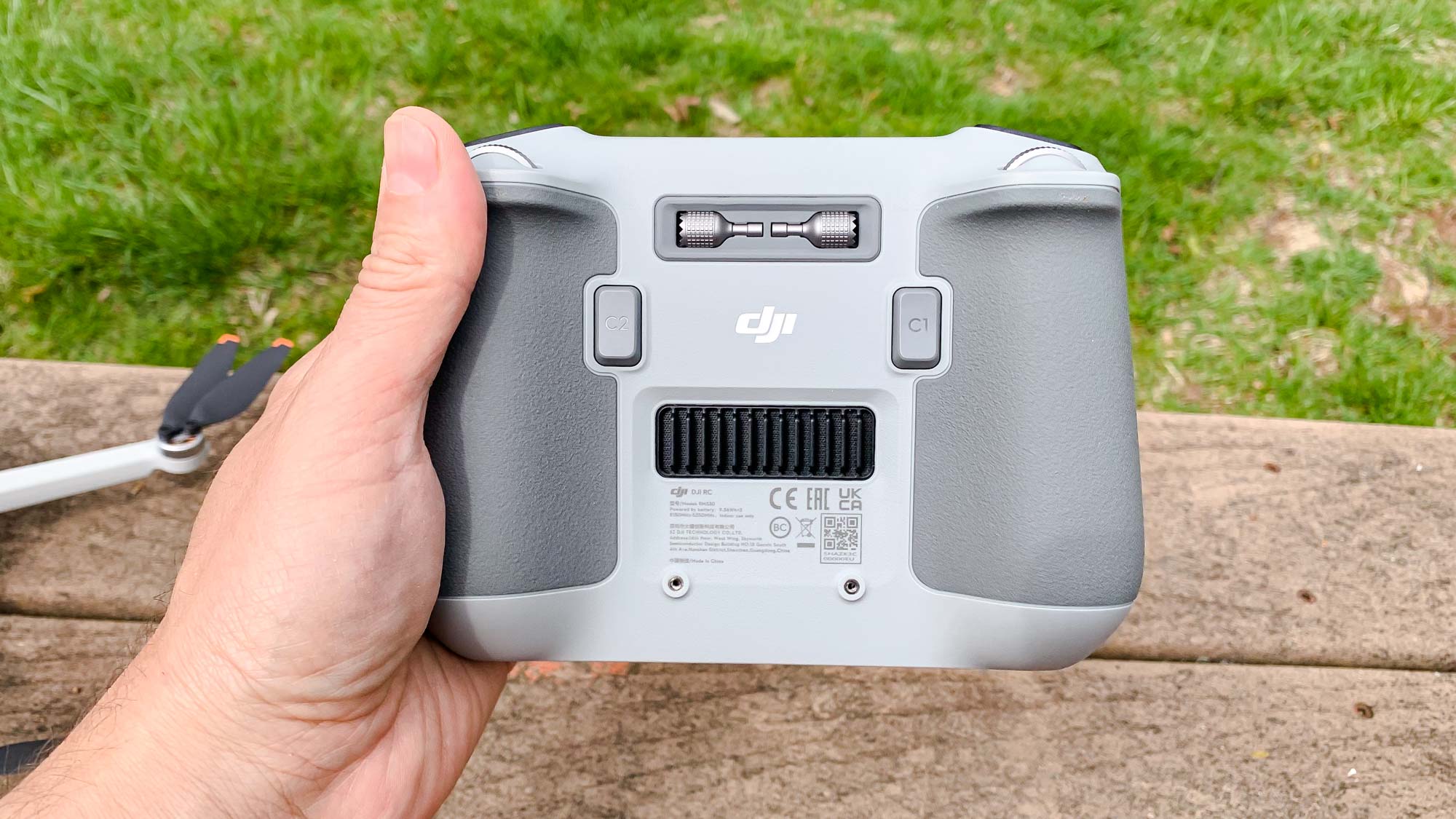
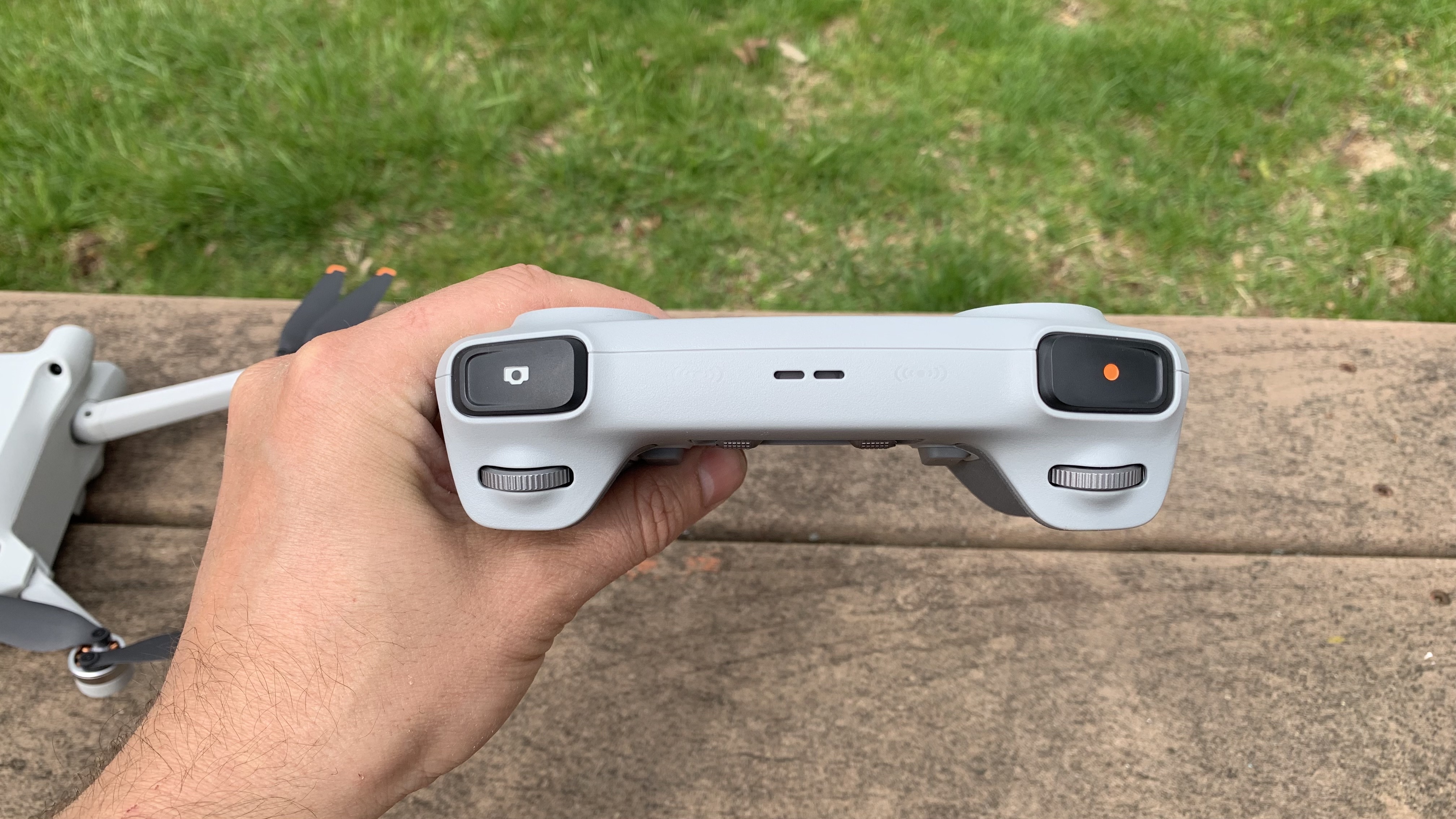
There are pros and cons to both controllers. For instance, the DJI RC weighs 390 grams, while the RC-N1 weighs 385 grams, so when you add your phone, it’s a lot heavier.
The DJI RC’s screen has a resolution of 1080p and a rated brightness of 700 nits, which isn’t bad — I didn’t have any trouble viewing it outdoors — but isn’t anywhere close to some of the best phones. The iPhone 13 Pro Max, for instance, hit 1,038 nits on our tests, so if you’re out flying on a bright day, that difference could be significant. Moreover, the RC’s display does not have adaptive brightness, so if the sun suddenly pokes out from a cloud, it’s a bit annoying to have to manually adjust the screen.
Then again, it’s nice to be able to fly the drone and still keep your smartphone free for other things.
DJI Mini 3 Pro review: Video performance and features
The Mini 3 Pro packs a 1/1.3-inch CMOS sensor with a f/1.7 aperture. It can take photos up to 48MP in size, and record videos at 4K/60 fps (and 30fps in HDR). You can also record slo-mo video at 1080p at 120 fps.
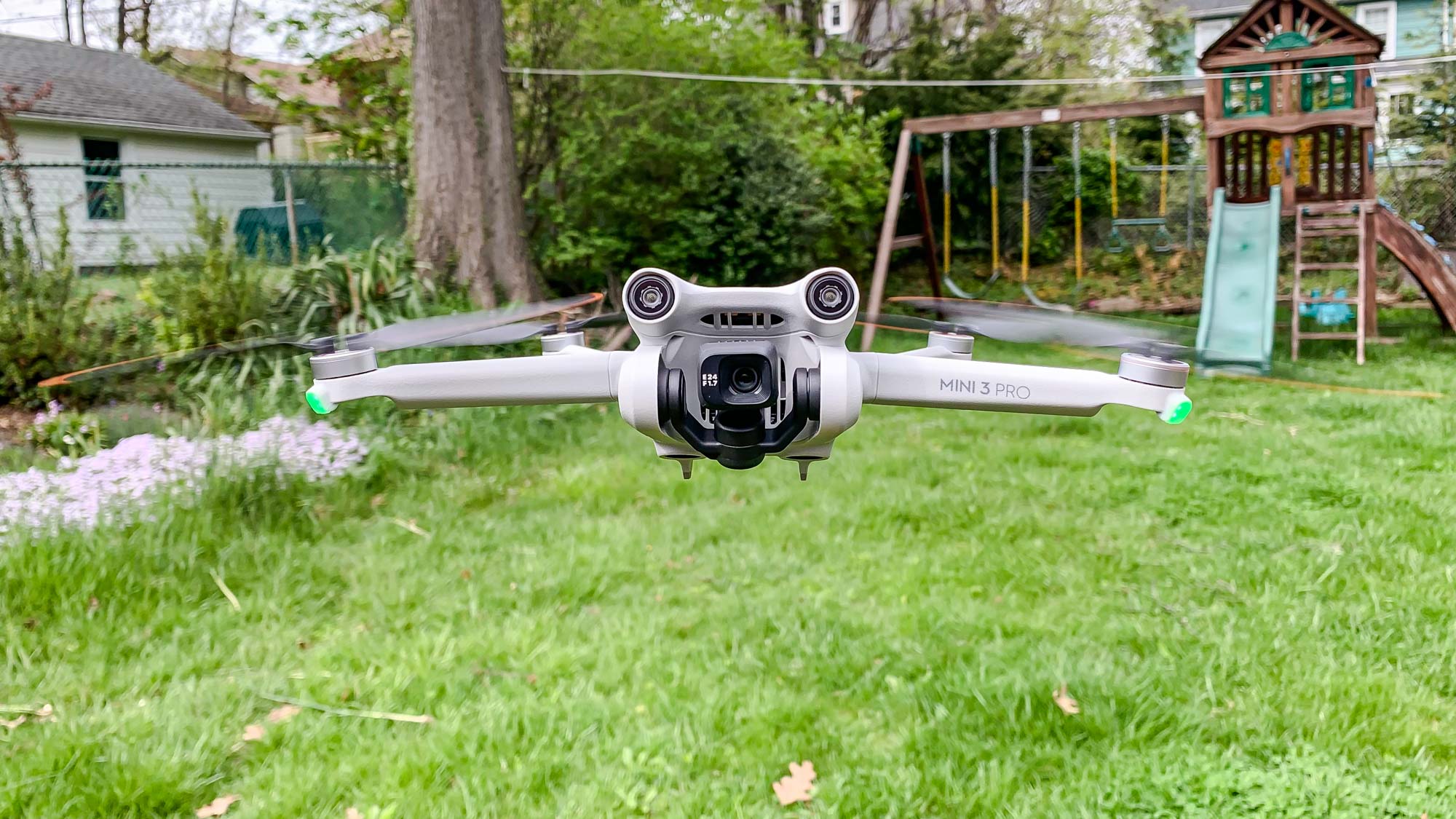
Video quality was superb; while not as detailed as DJI’s pricier drones, it was sharp and colorful; I could make out individual petals and leaves on cherry trees as they waved in the wind. However, I did notice that in slightly overcast conditions, footage was grainier than with DJI drones that have larger camera sensors.
Just for the TikTok generation, the Mini 3 Pro has a new vertical video mode; from the app or controller, you can switch the camera’s orientation from horizontal to vertical — the camera physically rotates 90 degrees, so there’s no worry of a compressed image. It’s a neat trick and really easy to use, and will definitely appeal to influencers, perhaps even more than Snap’s selfie drone.

It’s also great for when you want to capture the entirety of a vertically-oriented object, such as a skyscraper; I used the mode to film a crane removing a maple tree from my neighbor’s yard.
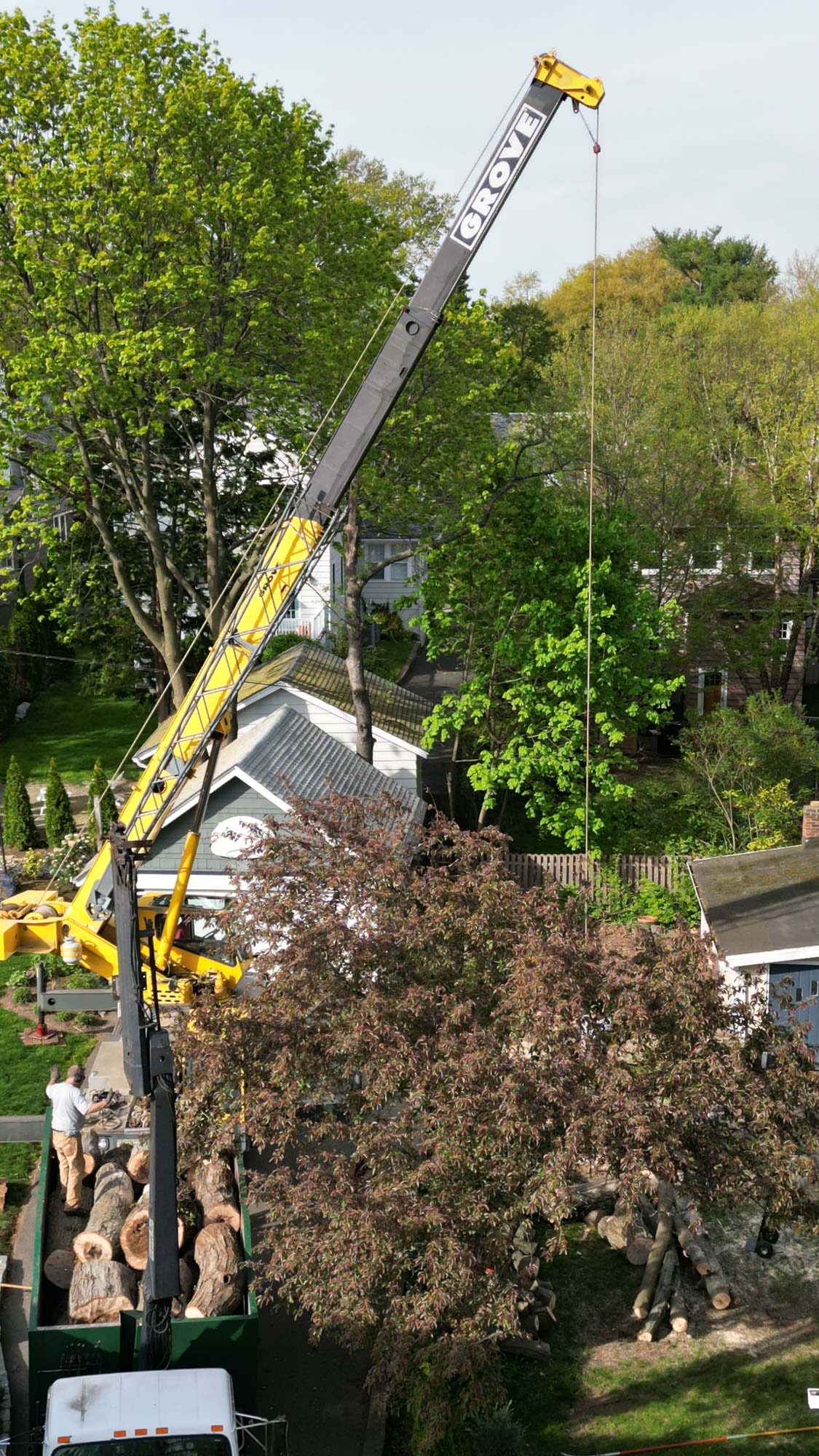
The only downside to portrait mode is that it doesn’t support object tracking, so you can’t film yourself in this mode and expect the Mini 3 Pro to automatically follow you around.

When in standard mode, the Mini 3 Pro adeptly followed me around as I weaved my way through a row of pink blossoming cherry trees. It was able to keep me in the frame, all while navigating the thicket, thanks to its forward, back, and downward-facing object sensors. It’s both really neat and a little unnerving.
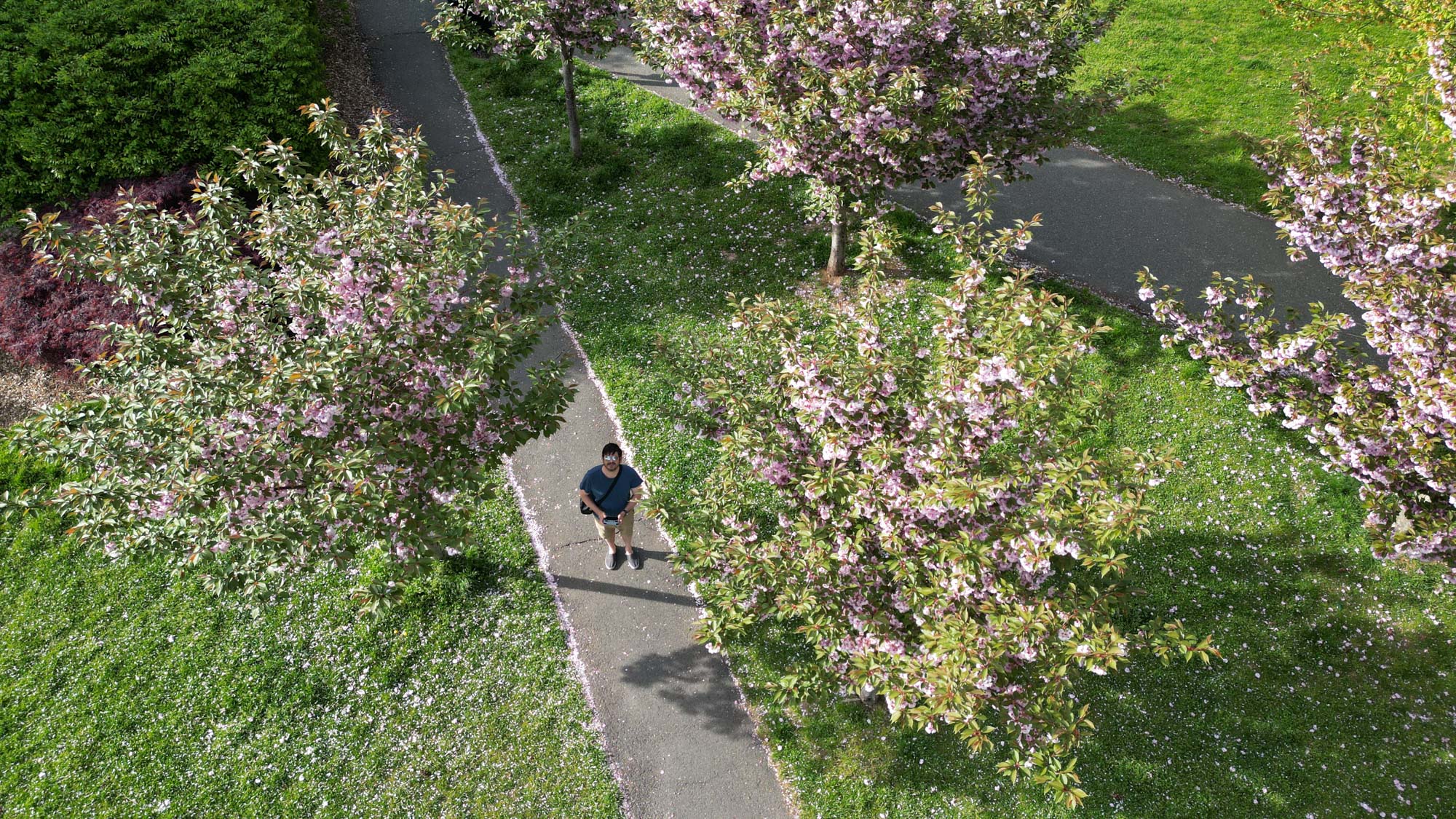
There are some limitations to object tracking. While it could follow me around easily, my cat proved too small for it to track.
Another benefit of the redesigned gimbal is that the Mini 3 Pro’s camera can now angle 60 degrees upwards. While not as nimble as the Parrot Anafi, whose camera can rotate 90 degrees up and down, it’s an improvement over previous DJI drones, and means you can get a better view of the underside of things.
DJI Mini 3 Pro review: Battery life
One of the things I like the most about DJI drones — aside from their ease of use — is their exceptional flight time. With its standard battery, the Mini 3 Pro has a flight time of roughly 34 minutes, which is good, but not as good as the Mavic 3’s 41-minute endurance.
Pick up the Intelligent Flight Battery Plus, however, and the Mini 3 Pro’s flight time jumps to 47 minutes — three quarters of an hour. In testing, I was able to get around 40-ish minutes, but unlike DJI’s larger drones, the Mini 3 Pro will be more affected by the wind.

It’s also important to note that the Intelligent Flight Battery Plus pushes the drone’s weight above 249 grams, and as such, won’t be available in some markets, such as Europe.
DJI MIni 3 Pro vs. other DJI drones
| Row 0 - Cell 0 | DJI Mini Pro 3 | DJI Mini 2 | DJI Air 2 | DJI Air 2S |
| Starting Price (w/ remote) | $759 | $449 | $799 | $999 |
| Camera | 1/1.3-inch | 1/2.3-inch | 1/2-inch | 1-inch |
| Max video res. | 4K/60 fps | 4K/30 fps | 4K/60 fps | 5.4K/30 fps |
| Max photo res | 48MP | 12MP | 48MP | 20MP |
| Flight time | 47 mins (w/extended battery) | 31 mins | 34 mins | 31 mins |
| Weight | 249 g | 249 g | 570g | 570g |
| Obstacle sensing | 3-way | 1-way | 4-way | 4-way |
DJI Mini 3 Pro: Verdict
Think of the Mini 3 Pro as giving you the capabilities of the Air 2 in the body of the Mini 2 and you won’t be far wrong. While you’re not getting quite as big an image sensor as the Air 2, you are getting a more compact drone with the same resolution, 3-way obstacle sensing, and a camera that can rotate to capture vertical video. And, if you purchase the extended battery, you get a very impressive 47-minute flight time.
While I still think the $449 DJI Mini 2 is the best drone for most people, the Mini 3 Pro is a good upgrade for those looking for a better camera in a small package.

Michael A. Prospero is the U.S. Editor-in-Chief for Tom’s Guide. He oversees all evergreen content and oversees the Homes, Smart Home, and Fitness/Wearables categories for the site. In his spare time, he also tests out the latest drones, electric scooters, and smart home gadgets, such as video doorbells. Before his tenure at Tom's Guide, he was the Reviews Editor for Laptop Magazine, a reporter at Fast Company, the Times of Trenton, and, many eons back, an intern at George magazine. He received his undergraduate degree from Boston College, where he worked on the campus newspaper The Heights, and then attended the Columbia University school of Journalism. When he’s not testing out the latest running watch, electric scooter, or skiing or training for a marathon, he’s probably using the latest sous vide machine, smoker, or pizza oven, to the delight — or chagrin — of his family.
